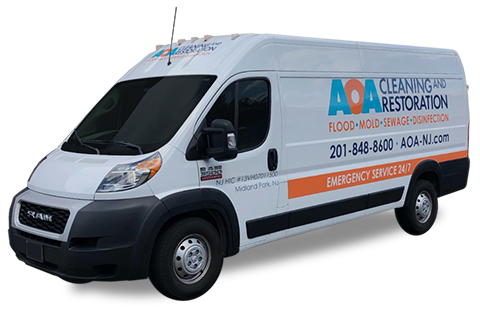Water damage is a common problem that many homeowners face, but is it repairable? Understanding how to repair water damage is crucial for preventing further issues and restoring your property to its previous condition. In this article, we will explore the repairability of water damage, the types and severity of damage, the steps involved in the repair and restoration process, and the key takeaways to consider.
Key Takeaways:
- Water damage can be repaired, but the severity and type of damage determine the extent of repairs needed.
- There are three types of water damage: clean water, gray water, and black water, with each requiring different approaches for repair and restoration.
- Locating the source of water, turning off power, and quickly drying out the affected area are essential steps in water damage repair.
- For extensive damage, it is advisable to hire professionals who have the equipment and expertise to efficiently pump out and dry out the space.
- Mold inspection and remediation should be considered, especially if the area was not dried out within 24 hours.
By following the proper steps and seeking professional help when needed, water damage can be repaired, allowing you to restore your property and protect its value. Let’s dive deeper into the types of water damage and the necessary repairs for each scenario.
Types and Severity of Water Damage
Before diving into the repair process, it’s important to understand the types and severity of water damage. Depending on the source and composition of the water, the extent of the damage can vary, requiring different approaches to repair.
Clean water damage: This type of damage is caused by clean water from sources such as broken pipes or overflowing sinks. While it may not pose an immediate health risk, prompt action is still necessary to prevent further damage. Clean water damage can generally be cleaned up and repaired without extensive professional help.
| Type of Water Damage | Description |
|---|---|
| Clean Water Damage | Caused by clean water sources such as broken pipes or overflowing sinks. |
| Gray Water Damage | Involves water that may contain contaminants and requires careful removal and disinfection. |
| Black Water Damage | Hazardous damage caused by sewage or flooding, requiring professional handling. |
Gray water damage: This refers to water that may contain contaminants, such as from washing machines or dishwashers. Gray water damage requires cautious removal, thorough cleaning, and disinfection to ensure a safe environment. It is advisable to seek professional assistance for extensive gray water damage.
Black water damage: This is the most severe type of water damage, typically caused by sewage backups or natural disasters like flooding. Black water is highly hazardous, as it contains pathogens, chemicals, and other harmful substances. It is essential to engage professional water damage repair services for black water damage to ensure proper cleaning, disinfection, and restoration.
Understanding the severity and type of water damage is crucial in determining the appropriate repair approach. While minor clean water damage can often be addressed with DIY methods, it is always recommended to seek professional help for extensive damage or when dealing with gray or black water damage. Professionals have the necessary equipment, expertise, and knowledge to ensure a thorough repair process, minimizing the risk of further issues.
Table: Types of Water Damage
| Type | Source | Description |
|---|---|---|
| Clean Water Damage | Broken pipes, overflowing sinks | Caused by clean water sources |
| Gray Water Damage | Washing machines, dishwashers | Involves water with contaminants |
| Black Water Damage | Sewage backups, flooding | Hazardous damage with pathogens and chemicals |
Steps for Water Damage Repair and Restoration
Now that you understand the types of water damage and the severity of the damage, let’s explore the steps involved in repairing and restoring your property.
1. Locate the source and turn off the power: The first step is to find the source of the water damage and turn off the power supply to the affected area. This ensures safety and prevents further damage.
2. Remove and dry out wet items: It is crucial to remove any wet items from the area and start the drying process as quickly as possible. This can be done by using dehumidifiers, fans, and other drying equipment. For minor flooding, you can handle this step yourself, but for more extensive damage, it is recommended to hire professionals who have the necessary equipment and expertise to efficiently dry out the space.
3. Consider mold inspection and remediation: Mold can quickly grow in damp environments, especially if the space was not dried out within 24 hours. It is essential to conduct a thorough mold inspection and, if necessary, hire professionals for remediation to prevent any health issues and further damage.
4. Clean and sanitize: Once the water is removed and the area is dry, it’s time to clean and sanitize. For clean water damage, everyday cleaning products can be used. However, for gray water or black water damage, it is advisable to seek professional cleaning services, as these types of water may contain contaminants that require specialized treatment.
5. Restore and rebuild: Depending on the extent of the damage, restoration and rebuilding may be necessary. This can include replacing damaged flooring, walls, ceilings, and furniture. Working with professionals in this stage ensures that the repairs are done correctly and the property is restored to its pre-damage condition.
Remember, identifying and fixing the source of the water damage is crucial to prevent future issues. Additionally, insurance claims can help cover the costs of water damage repair, depending on your policy and the cause of the damage. By following these steps and seeking professional help when needed, you can successfully repair and restore your property after water damage.
| Step | Description |
|---|---|
| 1 | Locate the source and turn off the power |
| 2 | Remove and dry out wet items |
| 3 | Consider mold inspection and remediation |
| 4 | Clean and sanitize |
| 5 | Restore and rebuild |
Conclusion
In conclusion, water damage is indeed repairable, and by following the proper steps and seeking professional help when needed, you can restore your property and minimize the impact of water damage.
Factual data supports that there are three types of water damage: clean water, gray water, and black water. Clean water damage, such as from a broken pipe, is relatively easy to clean up and repair. Gray water damage, which may contain contaminants, requires careful removal and disinfection. Black water damage, caused by sewage or flooding, is hazardous and should be handled by professionals.
To start the repair process, it is crucial to locate the source of the water and turn off the power for safety. Quick removal and drying of wet items is essential, especially within the first 24 hours to prevent mold. Minor flooding can often be addressed with DIY repairs, but for extensive damage, it is advisable to enlist the help of professionals equipped with the necessary expertise and equipment.
After removing the water and drying out the space, thorough cleaning and sanitizing should be carried out. Everyday cleaning products can be used for clean water damage, while professionals may be required for dirty water damage. Depending on the extent of the damage, restoration and rebuilding may also be necessary to replace damaged flooring, walls, ceilings, and furniture. Additionally, identifying and fixing the source of the water damage is vital to prevent future issues.
Insurance claims can assist in covering the costs of water damage repair, although coverage will depend on the policy and the cause of the damage. By taking prompt action, following the correct repair process, and seeking professional assistance when needed, you can effectively address water damage and restore your property to its previous condition.
FAQ
Q: Is water damage repairable?
A: Yes, water damage is repairable. The severity of the damage and the type of water involved will determine the extent of the repairs needed.
Q: What are the types of water damage?
A: There are three types of water damage: clean water, gray water, and black water.
Q: How do you repair water damage?
A: To repair water damage, it is important to locate the source of the water, turn off the power, remove wet items, dry out the space, clean and sanitize, and consider restoration and rebuilding if necessary.
Q: Should I hire professionals for water damage repair?
A: For minor flooding, DIY repairs can be done. However, for extensive damage, it is advisable to hire professionals who have the equipment and expertise to efficiently pump out and dry out the space.
Q: What should I do after water damage?
A: After water damage, it is important to consider mold inspection and remediation, especially if the area was not dried out within 24 hours. It is also crucial to identify and fix the source of the water damage to prevent future issues.
Q: Can insurance cover the costs of water damage repair?
A: Depending on the policy and the cause of the damage, insurance claims can help cover the costs of water damage repair. It is important to review your policy and contact your insurance provider for more information.




















